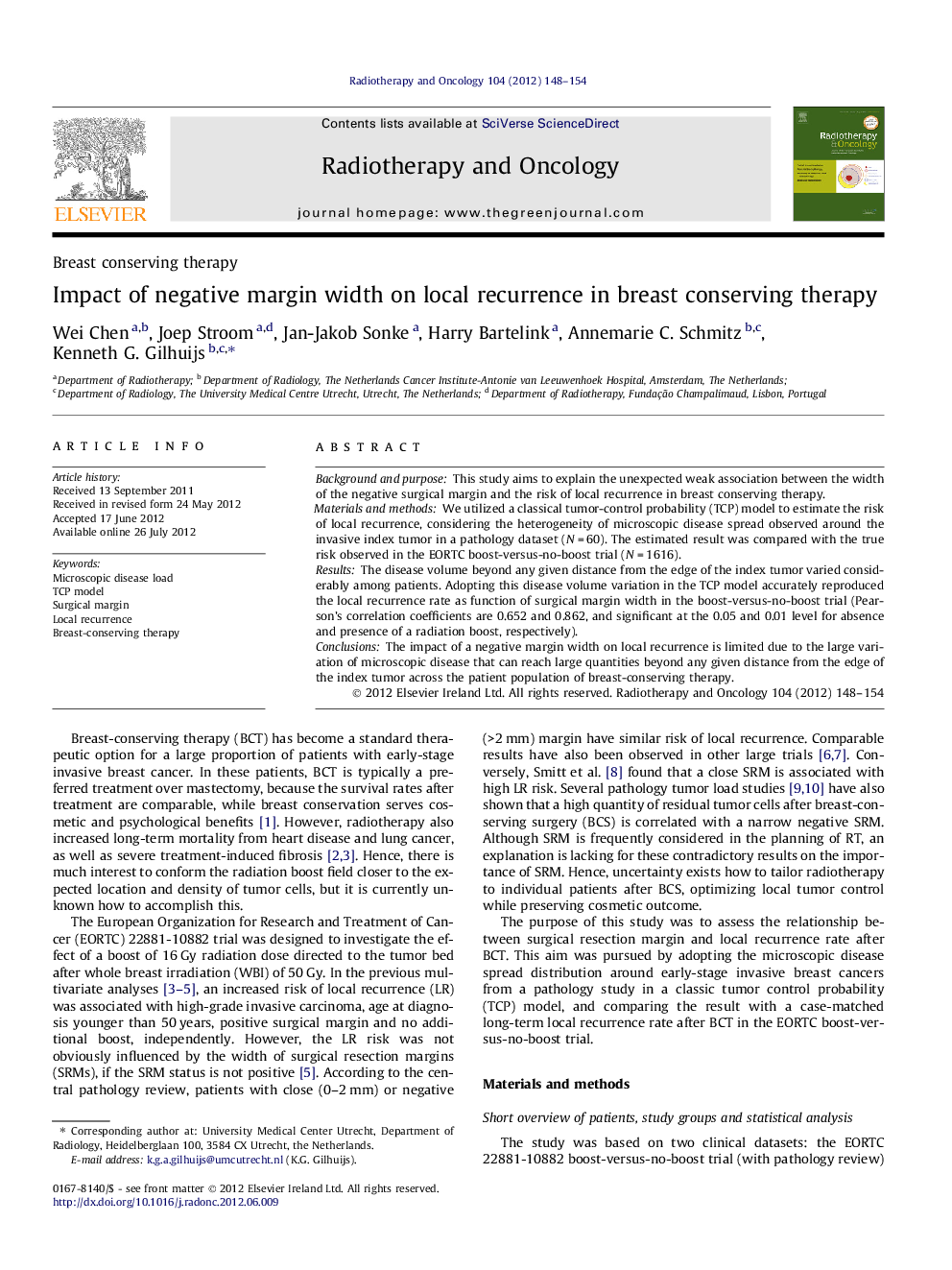| Article ID | Journal | Published Year | Pages | File Type |
|---|---|---|---|---|
| 2157785 | Radiotherapy and Oncology | 2012 | 7 Pages |
Background and purposeThis study aims to explain the unexpected weak association between the width of the negative surgical margin and the risk of local recurrence in breast conserving therapy.Materials and methodsWe utilized a classical tumor-control probability (TCP) model to estimate the risk of local recurrence, considering the heterogeneity of microscopic disease spread observed around the invasive index tumor in a pathology dataset (N = 60). The estimated result was compared with the true risk observed in the EORTC boost-versus-no-boost trial (N = 1616).ResultsThe disease volume beyond any given distance from the edge of the index tumor varied considerably among patients. Adopting this disease volume variation in the TCP model accurately reproduced the local recurrence rate as function of surgical margin width in the boost-versus-no-boost trial (Pearson’s correlation coefficients are 0.652 and 0.862, and significant at the 0.05 and 0.01 level for absence and presence of a radiation boost, respectively).ConclusionsThe impact of a negative margin width on local recurrence is limited due to the large variation of microscopic disease that can reach large quantities beyond any given distance from the edge of the index tumor across the patient population of breast-conserving therapy.
